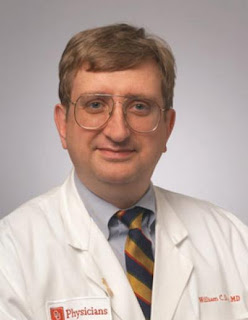Heat treatment with chemotherapy kills large tumors; Approved by FDA; Next stage clinical trials start this year at OUHSC
OKLAHOMA CITY – A new treatment developed and tested by University of Oklahoma researchers not only killed large breast cancer tumors, but reduced the need for mastectomies by almost 90 percent. The latest results appear in an upcoming issue of the Annals of Surgical Oncology.
Building on this success, researchers at the OU Health Sciences Center, plan to start the next phase of clinical trials this year to test the therapy on even larger tumors.
"The trial was very successful. We were able to completely reverse those odds," Dooley said. "We redesigned the machine and will begin clinical trials this year to determine whether the therapy works on tumors that are larger than one and a half inches and smaller than 5 inches in size."
In theory, Dooley said the technique could be used on any organ that could be "held relatively still." Scientists are now working to integrate heat-sensitive nanotechnology that would more precisely target cancer cells. They also plan to study a byproduct of the rapid disintegration of the tumor – a boosted immune system. Dooley said it looks like the rapid release of cancer proteins into the blood stream is causing an immune response that could reduce the chance of cancer recurrence. ###
As Oklahoma's only comprehensive academic cancer center, the OU Cancer Institute is raising the standard of cancer treatment in the state through research and education. The center is working toward an application to the National Cancer Institute to be designated as a "Comprehensive Cancer Center," the gold standard of cancer research and care. Later this year, the OU Cancer Institute will move into a new 210,000-square-foot building. The facility will bring all outpatient cancer programs under one roof at the University of Oklahoma Health Sciences Center. For additional Information, visit www.OUCancer.org.
Contact: Diane Clay diane-clay@ouhsc.edu 405-271-2323 University of Oklahoma















No comments:
Post a Comment